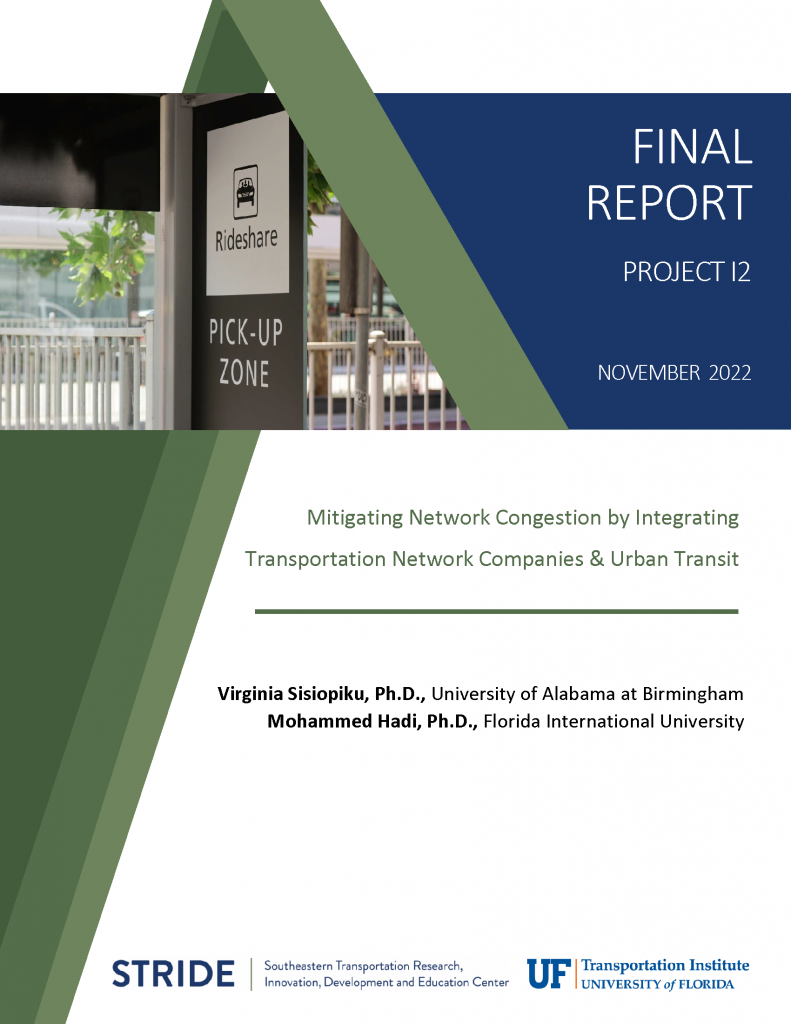Mitigating Network Congestion by Integrating Transportation Network Companies and Urban Transit

Research Team
Virginia Sisiopiku, University of Alabama at Birmingham
Mohammed Hadi, Florida International University
What is the current issue? Transportation Network Companies (TNCs) like Uber and Lyft, provide a transportation option that offers a higher level of availability, reliability, and convenience than traditional taxi and transit services. However, there are widespread concerns about their impacts on urban congestion and their threat to public transit and taxi services, some of which are affirmed by recent case studies
What was developed? The research team developed and demonstrated novel methods for calibrating MATSim models using a regionally approved mode split behavioral model and real-world traffic counts; collecting and processing Uber trip-level data using crowdsourcing to address the lack of publicly available TNC data; and modeling ride-hailing, in addition to automobile and transit trips, in the same simulation testbed.
What were the products? Products of this research include: (a) a questionnaire survey for documenting awareness and use of TNC services in the Southeastern US; (b) a rigorously calibrated MATSim model of the Miami Beach area; and (c) a comprehensive digital twin model of the Birmingham region. The latter MATSim model successfully incorporates public transit and ride-hailing services into the Birmingham transportation network, in addition to private automobiles.
What are the benefits of this project? The case studies included in this study provide evidence on the benefits of adopting transit, TNC, and road pricing strategies in small- and medium-size urban settings. They have the potential to assist transportation decision makers, urban planners, transit agencies, and TNC providers in their efforts to optimize their operations and serve the needs of the traveling public.